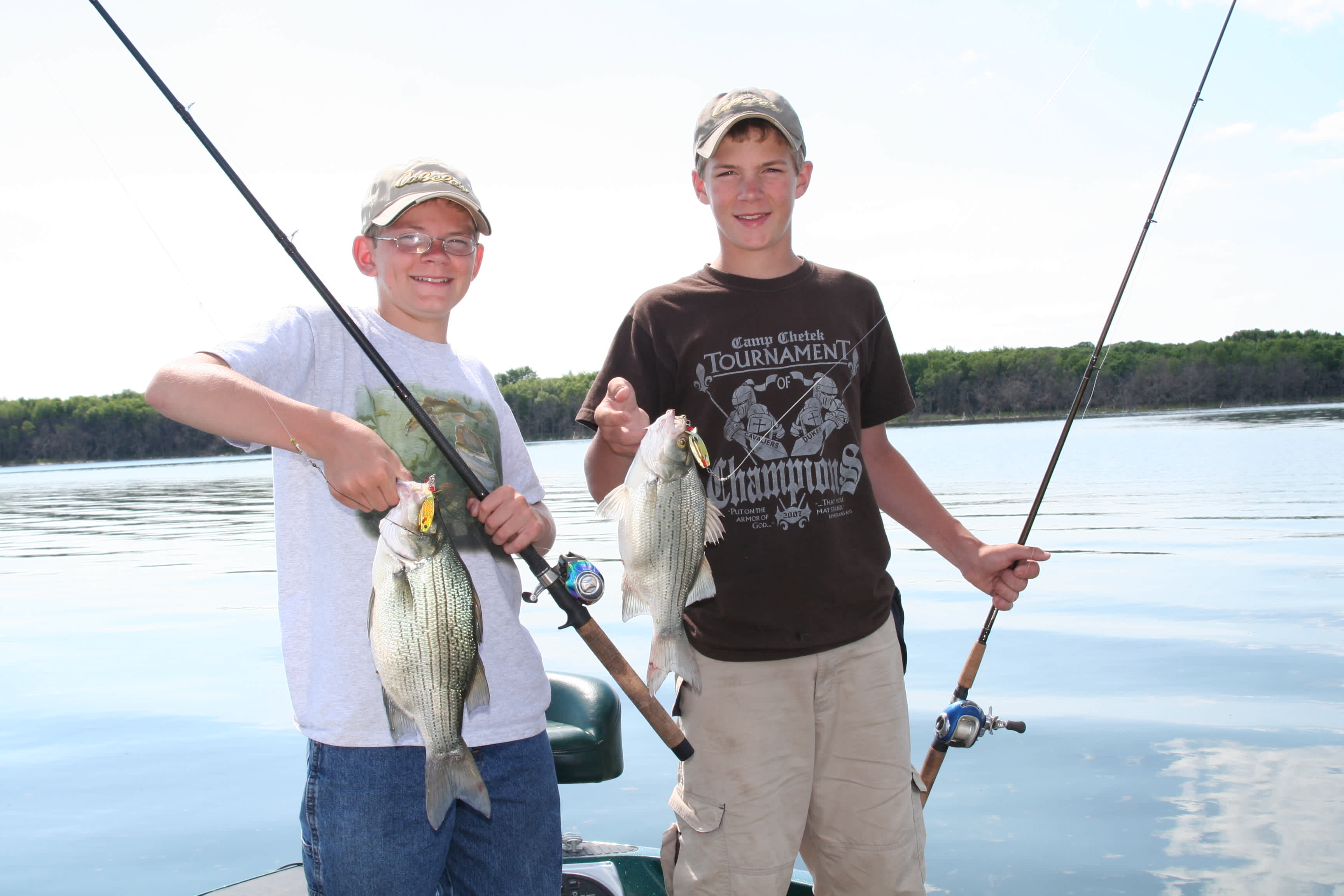The Other Bass
Bernie Barringer 05.20.16

Standing in the boat trying to catch my breath after catching a dozen fish on a dozen casts, I told my 10-year-old son Cody that we were going to try a new kind of fishing contest. “Cast your lure out past that boiling school of fish and reel as fast as you can. Try to get the lure back to the boat without catching a fish.” He looked at me like my head was on upside down, but he gave it a try. Over the next 15 minutes, we repeatedly tried to get a lure through that school of fish, but the little savages grabbed the lure no matter how fast we skipped it across the top of the water.
This was our introduction to white bass fishing. It took place on Coralville Reservoir in Iowa back in the mid-1990s, but I’ve found similar situations many times since that day. Every time we find a school of feeding white bass, it is followed by ridiculously fast action with laughter and excitement that’s hard to duplicate anywhere in freshwater fishing.
White Bass 101
White bass are found across the eastern two-thirds of the United States. They do well in lakes, rivers and reservoirs, and prefer waters with pelagic forage such as shad, but also thrive where perch exist in good numbers. White bass are normally found in large schools, which they use to surround their prey, then attack and feed as the schools of preyfish try to stay in a group. White bass tend to push the schools of baitfish up against a barrier of some sort to make it easier to feed. This could be an underwater wall, weed edge or back into a bay. Often, the barrier they use is the surface of the water, and that’s when things get crazy.
Sometimes the action is obvious from a distance, and sometimes you can pick up on subtle clues. On a calm day, you might see a collection of dimples on the water, or you may see some gulls diving. You might see an all out boiling, frothing, feeding orgy. No matter what clues you find, it pays to hustle over there and take part in the melee. Just about any lure will do because the fish are so aggressive, but choosing the right bait and rod/reel combo will mean the difference between catching a whole lot of fish or catching a few.
It stands to reason the best baits are those that you can cast and retrieve quickly. Many people use a jig and curly tail, which the fish readily attack, but casting with a spinning outfit and working a jig will cost a lot of time. These feeding frenzies often last 5-20 minutes, and the more casts you can get off, the more fish you’ll catch.
I prefer a high-speed baitcasting outfit. If a jig is the choice, use one at least ½-ounce with a paddle tail and a shad look to it. You can zip this lure out there and retrieve it straight through the action. When the feeding starts to slow, you can allow this bait to sink a count of three or four before retrieving. The fish might no longer be surfacing, but they still could be in the area.
I have a favorite lure, one you probably haven’t seen because it is a lure that was developed in the Pacific Northwest for trout and salmon. It’s called the HummBait (photo below) and is perfect for white bass. You can fish it super fast, it makes all kinds of vibration, and when it spins it has a 3D look like a real fish. Even when the bite is slow and the fish take a break, any white bass that sees this lure cannot help but suck it in. When the fish are boiling, I lift my rod tip and reel quickly so the bait buzzes along the surface, enticing slashing strikes. Choose one in 3/8- or 1/2-ounce sizes and silver, gold or chrome in color, although I have caught them on every color of this bait available.

I catch most of my white bass in shallow bays, although they can also be found over large areas of open water. Once you locate them in a bay, it’s just a matter of staying on top of them. You might catch a few from a frenzy, then see nothing for 20 minutes. Then all of a sudden you look over and there are fish breaking the surface 50 yards away. Stay alert and take advantage of the action while it occurs.
White bass are plentiful and limits are liberal in most states. An average white bass will run 1-2 pounds, but some areas produce 3-pounders. Don’t feel guilty about taking home your limit of fish. The flesh is white and cooks up well. Each of the bass will have a dark red, fatty slab along the skin side of the fillet. This tastes very fishy and you will find the bass much better eating if you slice off this dark meat.
Go find a lake or river with white bass in it and get in on some of the hot action this summer. You will have a smile on your face and some good eating!

